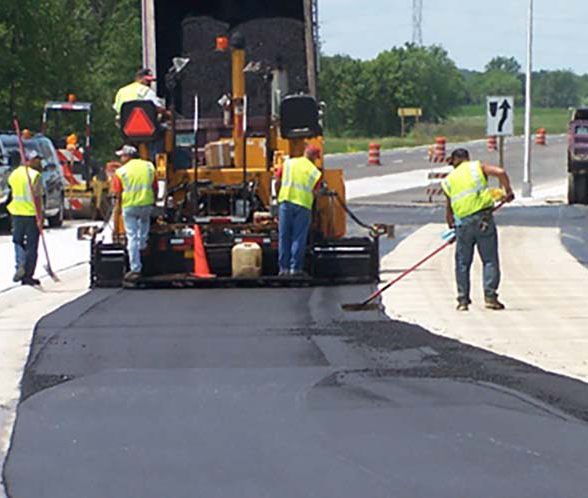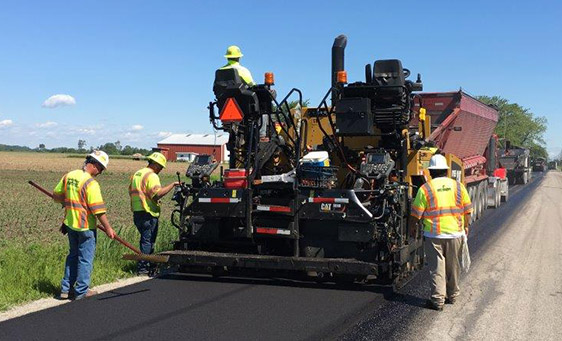Hot Mix Asphalt Paving: Redefining Business Residential Property Landscapes
Hot Mix Asphalt Paving: Redefining Business Residential Property Landscapes
Blog Article
Unlocking the Keys of Warm Mix Asphalt Modern Technology
Checking out the depths of hot mix asphalt innovation reveals a globe where specific solutions and thorough processes merge to shape our roads and framework. The combination of accumulations, binders, and fillers isn't simply a building and construction task yet a tactical orchestration of sturdiness and effectiveness. As we peer right into the elaborate dance of parts, a tapestry of strength and sustainability unravels. What lies underneath this surface of asphaltic mastery, and what secrets wait to be introduced in the realm of leading developments?
Importance of Warm Mix Asphalt
Warm Mix Asphalt plays a crucial function in modern infrastructure growth because of its resilience and cost-effectiveness. As the most typically made use of paving product for roadways, freeways, and parking whole lots, Hot Mix Asphalt offers a series of advantages that add to its relevance in construction projects. One key benefit is its ability to endure rush hour tons and severe climate condition, providing a trusted and resilient surface for transportation networks. Additionally, Hot Mix Asphalt is economical in both preliminary building and construction and long-term upkeep, making it a recommended choice for numerous facilities jobs.
The sturdiness of Warm Mix Asphalt stems from its structure, that includes aggregates, binder, and filler products that are meticulously picked and mixed to satisfy specific efficiency needs. This precise mix leads to a versatile and strong sidewalk that can withstand regular use without considerable damage. Warm Mix Asphalt is 100% recyclable, additional enhancing its sustainability and ecological advantages. On the whole, the relevance of Warm Mix Asphalt in infrastructure development can not be underrated, as it proceeds to be a foundation of contemporary building practices.
Elements of Asphalt Mixes
The structure of asphalt blends contains carefully chosen accumulations, binder, and filler materials that are critical for accomplishing specific performance demands. Accumulations are the main part of asphalt blends, offering toughness and stability. These accumulations can be natural, such as gravel or crushed stone, or synthetic, like recycled materials from old sidewalks. The binder, normally bitumen or asphalt concrete, holds the accumulations together and supplies versatility and sturdiness to the mix. The option of the binder is crucial as it straight affects the mix's efficiency in various weather. Fillers, such as hydrated lime or Portland cement, are made use of to enhance the mix's workability and aging resistance. Angled Parking.
The combination and proportion of these components play a substantial duty in figuring out the high quality and efficiency of the asphalt mix. Engineers meticulously design the mix to satisfy details requirements, taking into consideration elements like traffic quantity, environment conditions, and sidewalk life-span. Correct choice and harmonizing of aggregates, binder, and fillers are important for developing sturdy, resilient asphalt pavements.
Combining and Manufacturing Techniques

When the aggregates are selected, the binder, often asphalt concrete, is included to bind the products together. The binder's quality and amount significantly impact the mix's resistance, toughness, and flexibility to ecological aspects. In addition, fillers like hydrated lime or Portland cement might be incorporated to improve specific qualities of the asphalt mix, such as its workability or wetness resistance.
Throughout manufacturing, the aggregates and binder are heated up, typically between 250-325 ° F(121-163 ° C ), to facilitate mixing and ensure correct covering of the accumulations. The blending process must be extensive to accomplish an uniform blend that promotes the desired performance attributes of the asphalt. Different strategies, such as batch mixing or drum mixing, are utilized to accomplish regular and high-quality asphalt blends for construction jobs.
Factors Affecting Asphalt Efficiency
Factors influencing asphalt efficiency encompass a range of variables that influence the longevity, long life, and general top quality of asphalt pavements. One essential factor is the top quality of products utilized in the asphalt mix. The kind and resource of aggregates, the binder top quality, and the ingredients all play a considerable role in figuring out the performance of the asphalt sidewalk. The rank of aggregates is essential as it impacts the mix's resistance, workability, and stability to rutting and cracking.

Design factors to consider, such as pavement density and drain, are necessary in guaranteeing the long-term performance go to the website of the asphalt pavement. By very carefully taking into consideration these specialists, aspects and engineers can optimize asphalt efficiency and improve the service life of pavements.
Lasting Practices in Asphalt Technology

In addition, the development of warm-mix asphalt (WMA) innovations has obtained traction in recent times. WMA enables for the production and placement of asphalt mixes at lower temperature levels contrasted to conventional hot-mix asphalt, leading to reduced power usage and greenhouse gas emissions. In addition, making use of porous asphalt mixes can help reduce stormwater runoff problems by allowing water to penetrate through the sidewalk and into the ground, advertising natural water purification and recharge processes. By executing these lasting practices, the asphalt industry can add to constructing an extra durable and environmentally pleasant facilities network.
Verdict
In final thought, hot mix asphalt modern technology plays an essential function in contemporary facilities advancement as a result of its toughness and cost-effectiveness. By thoroughly stabilizing components, using appropriate blending strategies, and taking into consideration different factors, designers can develop premium asphalt blends that withstand hefty website traffic loads and harsh climate condition. Welcoming sustainable methods, such as utilizing recycled materials and warm-mix technologies, additionally boosts the ecological friendliness of asphalt modern technology.
Mixing and manufacturing techniques in warm mix asphalt modern technology entail the specific mix and handling of aggregates, binder, and fillers to create a high-performance and sturdy asphalt mix.Factors influencing asphalt performance encompass a range this post of variables that impact the resilience, long life, and general top quality of asphalt sidewalks. Sustainable practices in asphalt technology incorporate different campaigns aimed at minimizing the environmental influence of asphalt production and paving procedures. By integrating reclaimed asphalt pavement (RAP) and recycled asphalt shingles (RAS) right into brand-new asphalt mixes, the market can substantially minimize the usage of raw materials and energy, while also lowering garbage dump waste.
WMA permits for the production and placement of asphalt blends at reduced temperatures compared to standard hot-mix asphalt, resulting in reduced power consumption and greenhouse gas discharges.
Report this page